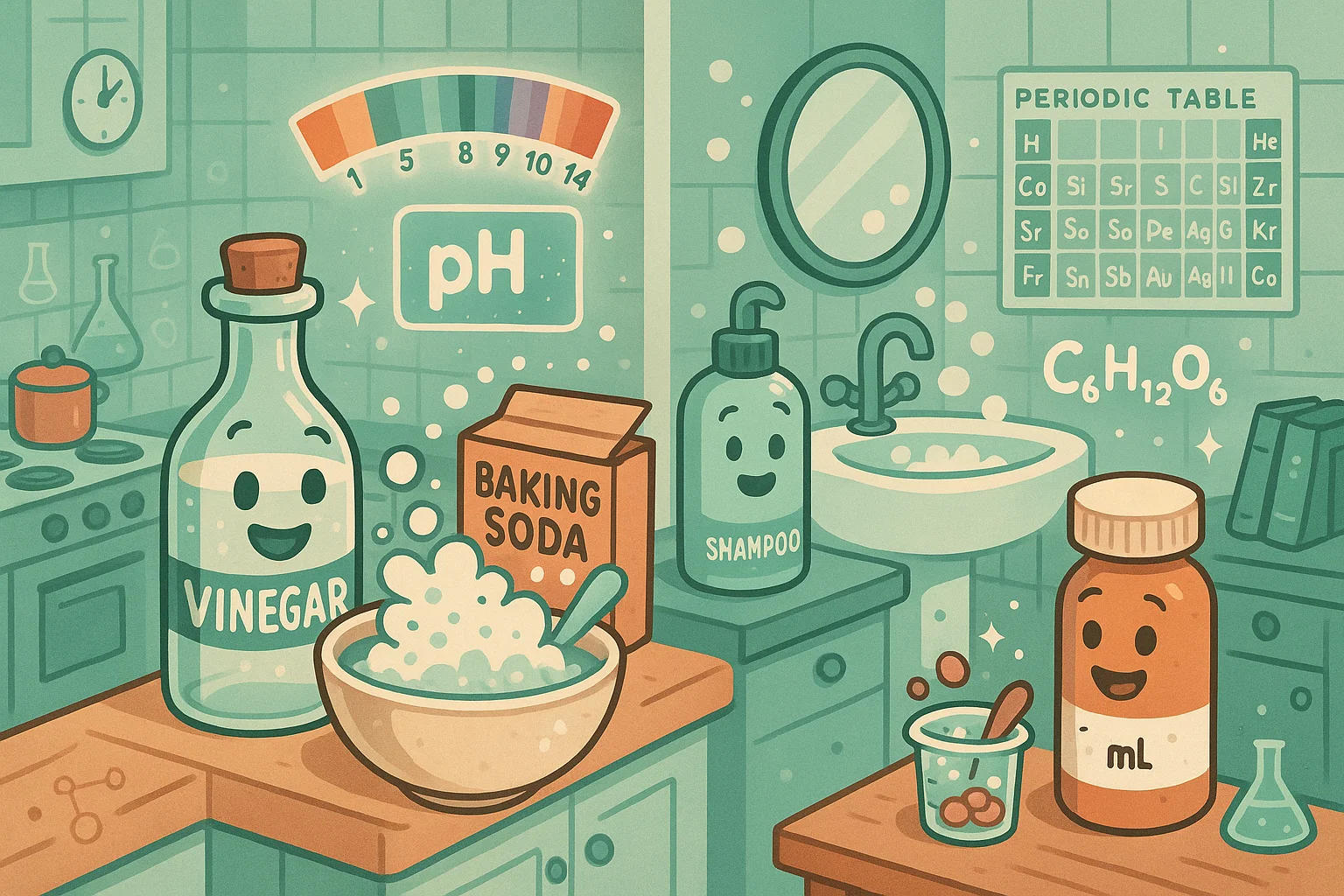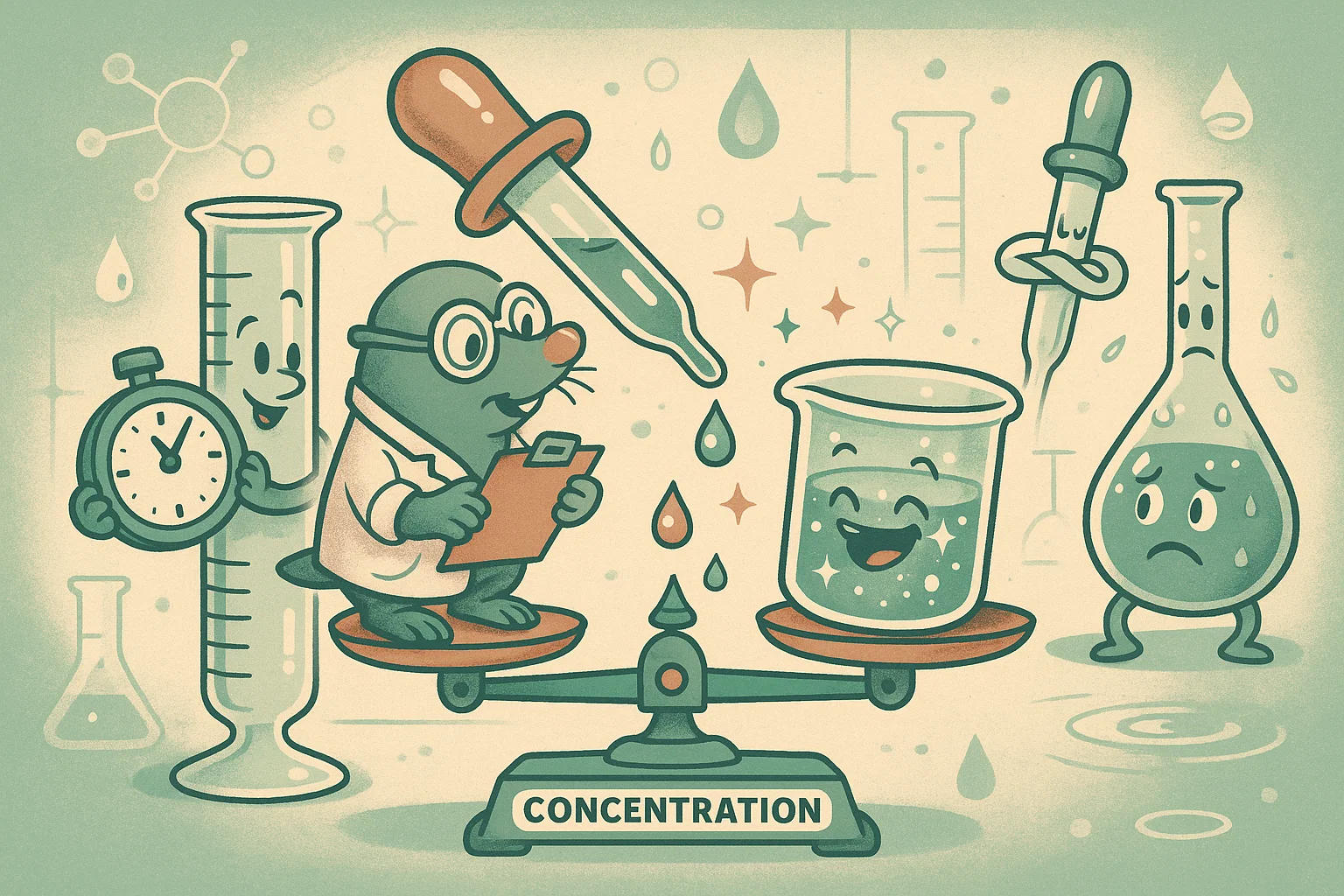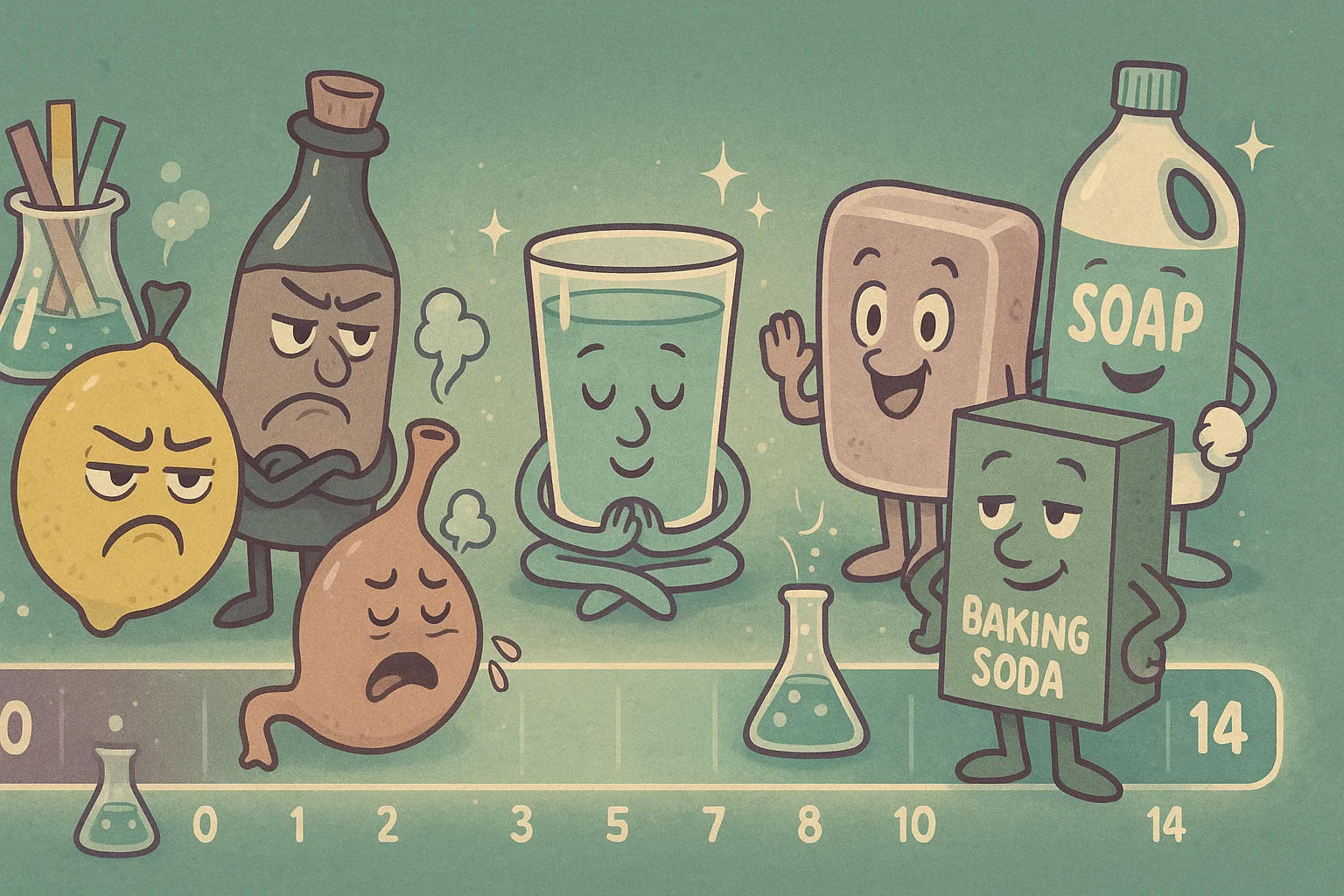Chemistry is the quiet force behind everything from a bubbling pot of pasta to the fuel in your car. It’s not just about lab coats and equations—it’s about understanding how the world works at the tiniest level. Every breath you take, every cleaning product you use, every time you cook, clean, or treat an illness, chemistry is there, shaping outcomes behind the scenes.
Whether you’re a student tackling your first mole conversion, a teacher preparing a lab, or simply someone curious about how things react and transform, chemistry gives you the tools to ask smart questions and find real answers. This page brings together the concepts, tools, and calculators that make chemistry easier to explore—and more useful in real life. Let’s dive in and make sense of the molecules that shape our world.
Chemistry at Work in the Real World
Chemistry shows up in more places than you might expect. It’s behind the rise of your bread dough, the fizz of your soda, the ingredients in your shampoo, and the air in your tires. It’s not just about formulas—it’s about how things work, change, and interact in everyday life.
In the kitchen, combining vinegar and baking soda is more than a fun experiment—it’s a real acid-base reaction. The acidity behind that reaction sits right on the pH scale, the same scale used to measure everything from lemon juice to pool water.
When it comes to medicine, dosing often relies on concentration. Mixing a solution from a stock substance? That’s where a basic dilution comes in—chemistry students and lab workers often calculate this using solution concentration formulas every day.
And when reading a label or preparing a chemical mixture, the numbers next to elements—like H₂O or C₆H₁₂O₆—point back to molar mass, a concept used constantly in both research and product formulation.
Whether you're tweaking a recipe, adjusting your aquarium’s water, or trying to understand what’s in your skincare, you’re already working with chemical principles. You’re already doing chemistry—you just might not have called it that yet.

The Building Blocks: Atoms, Molecules, and Reactions
At the heart of chemistry is a simple idea: everything is made of atoms. These tiny particles—like hydrogen, oxygen, and carbon—are the building blocks of matter. When atoms link together, they form molecules, which can have totally different properties than the atoms alone. For example, hydrogen and oxygen are both gases, but combine them just right and you get water.
The real magic of chemistry happens during reactions. Bonds break, new ones form, and entirely new substances appear. That fizz when you mix vinegar and baking soda? It’s the result of a chemical reaction creating carbon dioxide gas.
But chemical reactions don’t happen randomly—they follow rules. One of the most important is conservation of mass: matter isn't created or destroyed in a reaction, it just changes form. That’s why balancing chemical equations matters. It's not just a homework task—it’s how chemists make sure their formulas work in real life, whether they’re designing a drug or creating a new material.
If you ever feel stuck, a chemical equation calculator can show how elements stay in balance—and help you visualize what’s really happening on a molecular level.

Concentration, Solutions and Measurements
In chemistry, getting the right amount of something is everything. A little too much salt in your soup? Not a big deal. But in a lab—or in a medication formula—too much of one substance can completely change the outcome.
That’s where the concept of concentration comes in. When you dissolve a substance into a liquid, you create a solution—and the strength of that solution depends on how much solute is in a given amount of solvent. Chemists measure this using molarity, which tells you how many moles of a substance are present in each liter of solution.
So what’s a mole? Think of it as a chemist’s version of “a dozen,” but instead of 12, it’s around 6.022 x 10²³ particles—a useful way to count atoms and molecules, which are far too small to see.
This kind of precision matters in everything from diluting medications to making a chemical buffer for an experiment. Even small changes in volume or mass can throw off results, which is why calculations for solution dilution are a staple in any chemist’s toolbox.
You don’t need to memorize every formula—but understanding the relationship between quantity, volume, and concentration opens the door to more confident (and safer) chemistry.

Acids, Bases, and the Role of pH in Daily Life
From lemon juice to hand soap, acids and bases are everywhere. The pH scale, which ranges from 0 to 14, tells us how acidic or basic a substance is. Lower numbers are more acidic (like vinegar or stomach acid), while higher numbers are more basic (like bleach or baking soda).
Understanding pH isn’t just for chemistry class—it’s essential for cooking, cleaning, skincare, gardening, and even health. Your bloodstream, for instance, needs to stay within a very narrow pH range to keep your body functioning properly.
When you mix substances—like adding lime to acidic soil or neutralizing a spill—knowing the pH helps you predict the outcome. A pH calculator makes it easier to estimate acidity levels and understand how different materials might react together.
Everyday chemistry becomes a lot more clear when you know where things fall on the pH scale.

Chemistry in Action: Gas Laws, Thermodynamics & More
If you’ve ever watched a balloon shrink in the cold or felt your car tires expand on a hot day, you’ve already seen gas laws in action. Gases behave in predictable ways depending on their pressure, volume, and temperature—and those relationships are what the ideal gas law helps explain.
This isn’t just theory. It applies to real things like scuba tanks, air pumps, even cooking at high altitudes. When one variable changes—like heating up a gas—the others shift too. That’s why understanding PV = nRT (pressure × volume = moles × gas constant × temperature) is a staple in chemistry and physics alike.
Whether you're doing a lab experiment or just curious about how gases behave, running the numbers through a gas law calculator can show exactly how these changes play out. It's one of the clearest examples of chemistry working in motion.

Chemistry Is Closer Than You Think
Chemistry isn’t just for labs—it’s part of your everyday world. From baking and cleaning to understanding air quality or skincare ingredients, it helps explain how things change and interact. With the right tools, concepts like pH, molar mass, and dilution become easier to grasp and apply.
Whether you’re learning, teaching, or just curious, these tools are here to make chemistry more approachable—and a little more fun. Because the more you understand it, the more sense the world starts to make.
